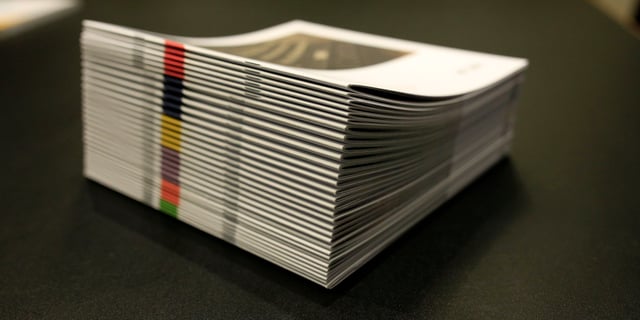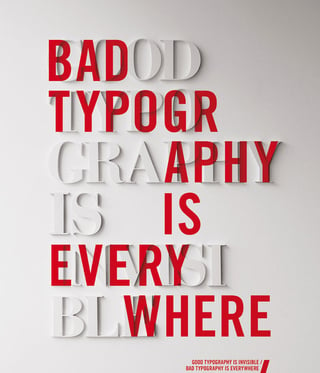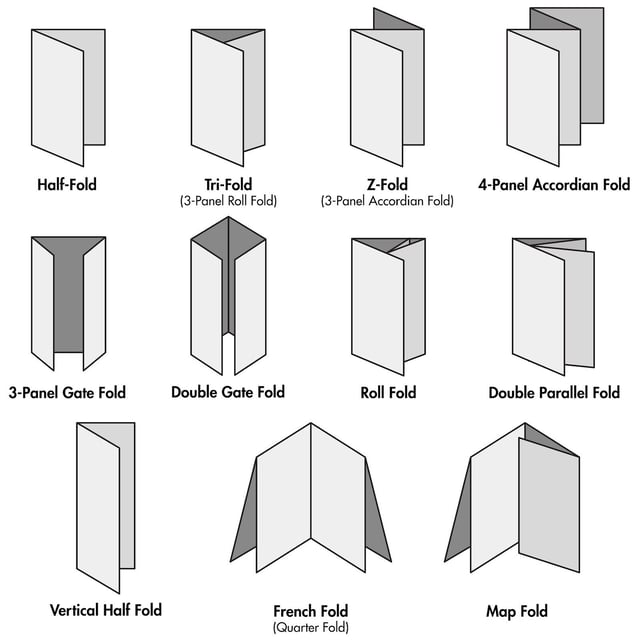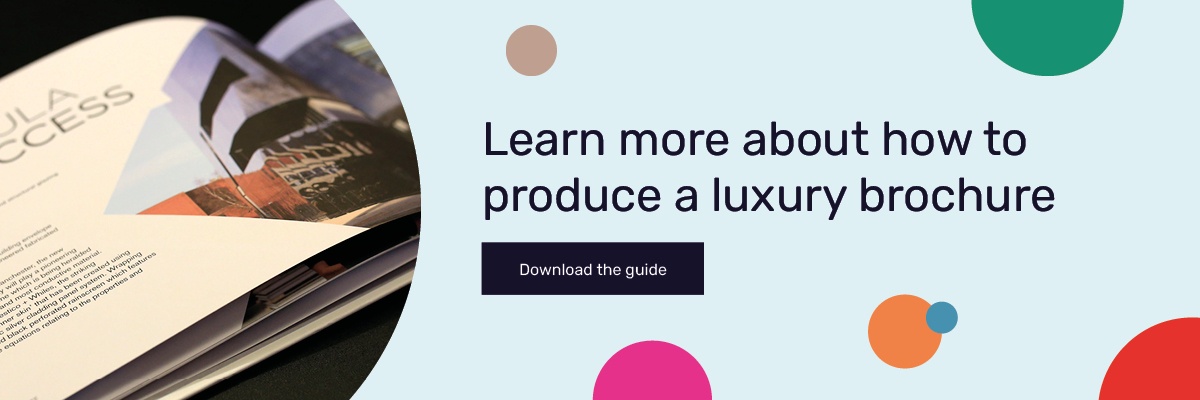In an ideal world, your business will have all of the details of your print project ready to hand over to the printing company you've outsourced the work to. This company would be able to take the key information from you and deliver the right print job back, with minimum effort on your part. When you're requesting print for businesses, don't forget some of the vital details. Instead, just follow this process.

Here's how to make your next print job run a little more smoothly.
- Finalise your project description
- Design your layout
- Select your materials and stock
- Decide on the size and dimensions
- Choose the right print technique
Finalise Your Project Description
Before you send off anything to be printed, one of the most vital steps is that you finalise your project description. Without this, the printing company you choose will be completely lost as to what it is you want and could produce something that's the wrong size or format compared to what you planned.
What this means is that once you're at the planning stage, you need to question whether you want a booklet, brochure, leaflet, newsletter or anything else. This part is crucial as different projects require different needs. Without this, the whole dimensions can change, the stock can change and type of printer can also change.
In order to provide the full scope of your project description, it's important that you communicate what you're trying to achieve with this project and what the end goal of the print campaign will be. A responsible print company that understands your vision will be able to suggest better alternatives based on their years of experience to help you achieve the best results possible.
So, ensure that the first part of your process is that you decide on the project description and it's clear to identify exactly what type of project you're going ahead with.
Design Your Layout
Not every printing company is going to be able to assist you with your design. If you manage to find one that does have experts on hand to help with the design and can help you get the most out of your printed project, then that's highly beneficial.
Even if that's not the case, you need to finalise your design before handing it over to the printer. Remember, if they don't have design capabilities then they'll simply print whatever it is you've provided them with. That's why it's important that you produce a couple of designs and select the one you feel is most appropriate and want to print.
This step of the process will require you to use the right software to come up with the best designs. Think along the lines of Adobe Illustrator and Adobe Photoshop. These popular, tried and tested pieces of software will have all the latest capabilities that can help you get the best out of your designs before it's time to hand the project over to the printing company.
If this print project is a one-off or you don't have the justification and/or the skillset for using Adobe's professional design tools, then Canva is a great, more basic alternative.
At this stage, it's also important that you're happy with the images you've taken, the fonts or typography you're using along with the colour scheme. It's beneficial to finalise this at this stage of the process because it means you don't have to start all over again and begin from scratch if it's something you're not entirely happy with.
 Image Credit: Elvaq Graphics Wordpress
Image Credit: Elvaq Graphics Wordpress
Once you have all of these available and designed, then you're in a much better position when it's time to print.
Select Your Materials And Stock
One big factor which is overlooked when outsourcing printing projects is that your business can decide on the materials or stock you want to use. With printing technology advancing, there are more and more high-end printers available now that can print on different materials and stock to give you the results you want.
If you're overlooking this step and you go on to request print for your business, then a printing company might just print on something they feel is suitable but you might not like it. If that's not the case, then it could actually slow the entire process down by going back and forth on trying to agree on the perfect stock.
To eliminate this and make turnaround times much quicker, it's advised that you finalise the stock beforehand and make sure the printing company you select has the necessary equipment. Now is the time to get specific with everything you want, rather than chasing details after the printing job is complete or close to your print deadline.
If you need folds or binding on your print project, for example, then this is the step where all of these details need to be finalised before the printing company takes over. These kinds of intricacies also affect the price of the job.
 Image Credit: Pinterest
Image Credit: Pinterest
Decide On The Size And Dimensions
The next step of the process that you need to know when requesting print for business is that it's your job to decide the size and dimensions of your print job.
Again, by not thinking about this beforehand, your results might not end up looking brilliant on smaller paper when you envisaged something much bigger. So, decide this extremely important detail and communicate this with the printing company you're working with.
This is helpful because they might have large format printers which specialise in much larger projects and could help make your results better than planned.
By deciding on dimensions and providing them, the right company can advise you on whether altering the dimensions could make the end result look better. Without this, they might not ask you because you didn't provide them and produce poor results. Or, once again, the turnaround times will be much longer until this factor has been decided so make sure you remember this crucial detail.
Choose The Right Print Technique
Finally, it's down to you which print technique you want to use to get the best results possible. As mentioned earlier, print technology continues to evolve so you're not limited to which type of printer you want to use. Here, it could be a good idea to ask several printing companies to provide examples of projects they've printed on numerous printers.
This gives you a guide on what the quality is like and makes your choice much easier rather than making it guesswork. Like the previous point, if your business needs something on a much larger scale, consider choosing a large format printer for the best results.
Then there's the option of digital printing, lithography and flexography which all produce different and unique results. Again, it depends on the results your business wants. Along with this, LED UV printing is a popular choice among businesses because of the many benefits it has, with its versatility being a key factor.
Quicker turnaround times, the unique drying method, colour enhancement, eco-friendliness and consistently high-quality finishes are what makes LED UV stand out. By selecting the print technique beforehand and letting the print company know which one you want, you'll know exactly what to expect rather than facing a poorly-produced surprise.
Anything Else I Need To Know?
You can ask as many questions as you want to your print company, or even take more factors into account before the actual printing job. It's better to do this than miss out something crucial later on.
- Make sure you have copies of your designs available should they be required.
- Provide the print company with an accurate quantity of how many copies you need.
- Remind them of whether you want to print on one or two sides of a paper.
- Ask them about any special packing or storage requirements to avoid compromising quality.
- Ask to see samples of the type of printing jobs they have produced in the past. You might see a different idea you like and would want to implement.
- Ask whether they have any requirements or restrictions of their own. For example, they might not have the type of printer your business wants to use or could have sizing limitations.
- Ask to see a proof of your project. Before running hundreds or thousands of prints, ask if you can see one finished example so you can give it your approval or ask for changes before printing the rest.
- Question their turnaround time. While results can't be instant, you'd need a printing company who can deliver your results by or well before your deadline. It's important to question this early on in the process rather than leaving it too late.
These are just some of the things you'll need to know. It all depends on your specific project and any needs you may have. However, by following the process mentioned you'll cover every important base before a print company delivers you the results you need.
Take The First Step In Creating Your Own Brochure
Before getting a print company involved, you obviously need to begin crafting your own brochure before the print process can begin. In this blog post, we explained what you need to know when requesting print for business. Now put that knowledge into action.
For tips and advice on how you can create your own luxury brochure, including sections on stock choices to photography, download our free guide on how to produce a luxury brochure by clicking below.
